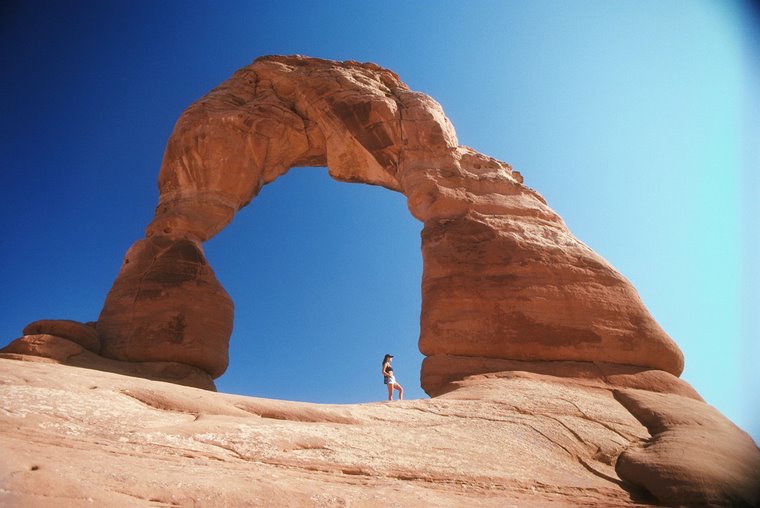



Jeg sad i weekenden og filosoferede over, hvordan nanotknologien blev anvendt i landskabet!Så fandt jeg denne artikel i en ecolect-blog og blev straks facineret, fordi nanoteknologiens anvendelse er meget mere udbredt end man går og tror. God appetit ønskes af Valdemar Thomsen.
What is Shades of Green?
We are a boutique landscape architecture studio in Marin [California, USA] that focuses on contemporary and sustainable landscape design.
What is your background and what attracted you to landscaping?
Ive and I (Tyler) both have degrees in landscape architecture.
Ive got her masters of landscape architecture at the Agricultural University of Norway and I received a BLA in landscape architecture from University of Georgia at the School of Environmental Design.
I was attracted to the program because it was creative and allowed me to study how we can have a positive impact on the environment.
I was interested in healing landscapes at the time and was also studying horticulture and ethnobotany (the study of plants and humans and their relationships).
Ive has always loved plants, drawing, and the design aspect of the profession. She brings her modern Scandinavian style to the office too!
How do you define green landscaping?
For us, it means designing thoughtful outdoor spaces that take into consideration all the resources and technology available to us in order to create a sustainable project.
For example - in addition to creating a beautiful design, we investigate from the very beginning of the project the ability to catch rainwater; or what native plants and patterns exist naturally in this area that we can add to; or creating swales and rain gardens on site to collect storm water.
Really basic things that can only add to a project in addition to saving our clients money. If you collect rainwater, you have a lower water bill for irrigation, if you collect storm water on site, you may not have to invest in additional drainage infrastructure.
How long have you been involved in landscape architecture and when did you realize that sustainability in that particular field was important to you?
For both of us, it was in school, which was 12 years ago for Ive and 10 years ago for me. I had one amazing professor, Darryl Morrison, that made a big impact on me.
He really helped me think about the big picture of sustainability and how all things are connected in our environment.
What are the top 3 challenges when creating green landscaping?
Budget! Some of the recycled products and the green technology we propose cost more than our clients budgets allow for. Finding great local materials can sometimes be a challenge.
I have to admit, we have a bit of a materials fetish and are always on the hunt for new and innovative materials that are produced locally!
Making sure our contractors are installing our designs with the same eco mindedness as we intended can be a challenge.
Can you tell us some of the landscaping practices that may not be so eco-friendly and what you're doing to change them?
Planting plants that don’t work for the climate and require too much water – we use drought tolerant and native plants to combat this problem.
For instance, lawns! We try to cut down on lawns and propose a more creative way to create a green usable space like a moss or thyme garden.
Using pesticides and herbicides – this is usually done by the contractors, so we try to educate them about more eco friendly ways to fertilize or get rid of pests.
Using sprinklers for all the irrigation wastes water, so we specify alternatives to the standard spray head like subsurface drip and using a Weathertrak irrigation controller can save water too.
Who are the top 5 designers who inspire you most?
Andrea Cochran, Vladimir Djurovic, Aidlin Darling Architects, Steve Martino, and Luis Barragan
What sort of materials do you enjoy working with most and why?
RColor in many forms, especially stucco because it adds whimsy to any space.
And metal, wood, and concrete because they come in so many different forms and can really unify our designs when used together.
What has been your most rewarding project to date and why?
They are all rewarding in some way, especially because you always get to see your final product.
However, one very rewarding project for Ive was in Orinda.
Our client has terminal cancer and the neighbors and friends raised money so that we could install our design for him.
Now he has a beautiful garden to enjoy and leave for his children one day.
If you were given the opportunity to landscape any place on earth, what location would you choose?
That is a tough question – especially because landscape architecture is such a broad field in terms of what kinds of projects we work on.
It would be amazing to design a residential garden for a villa in Tuscany – there is already so much history and natural beauty there.
What can we expect to see from Shades of Green in the next coming years?
I think you’ll see more and more of our projects incorporating green roofs, rainwater harvesting, solar, natural pools, rammed earth, and innovative materials since all of things are becoming much more accessible to our clients.
Do you have inspirational thoughts to share with other landscape designers?
Introduce the green concepts and educate your clients in the early stages of your projects so that Clients get excited about them from the beginning!
For more information on Shade of Green, please visit www.shadesofgreenla.com
Permalink to this interview: www.ecolect.net/limelight_jan_09.




